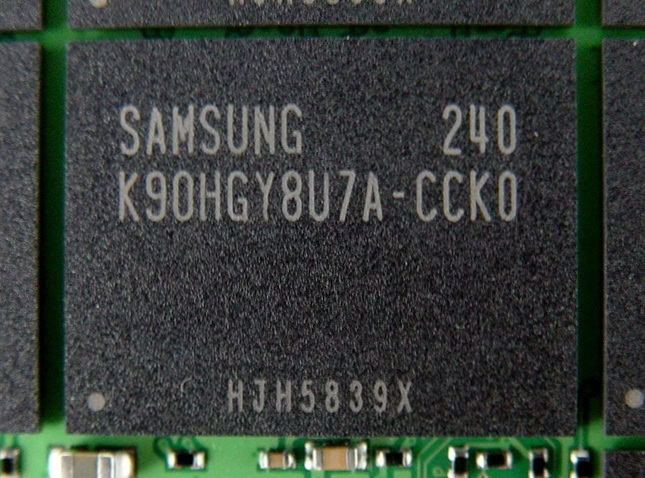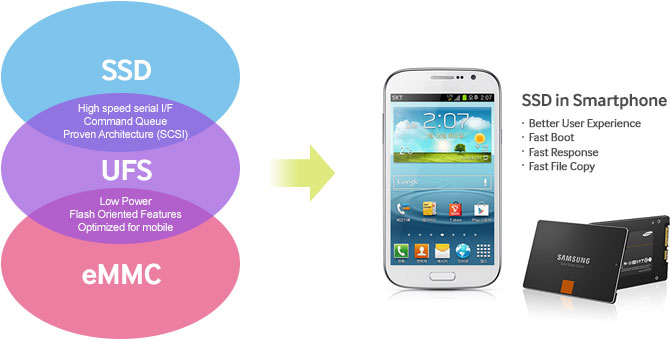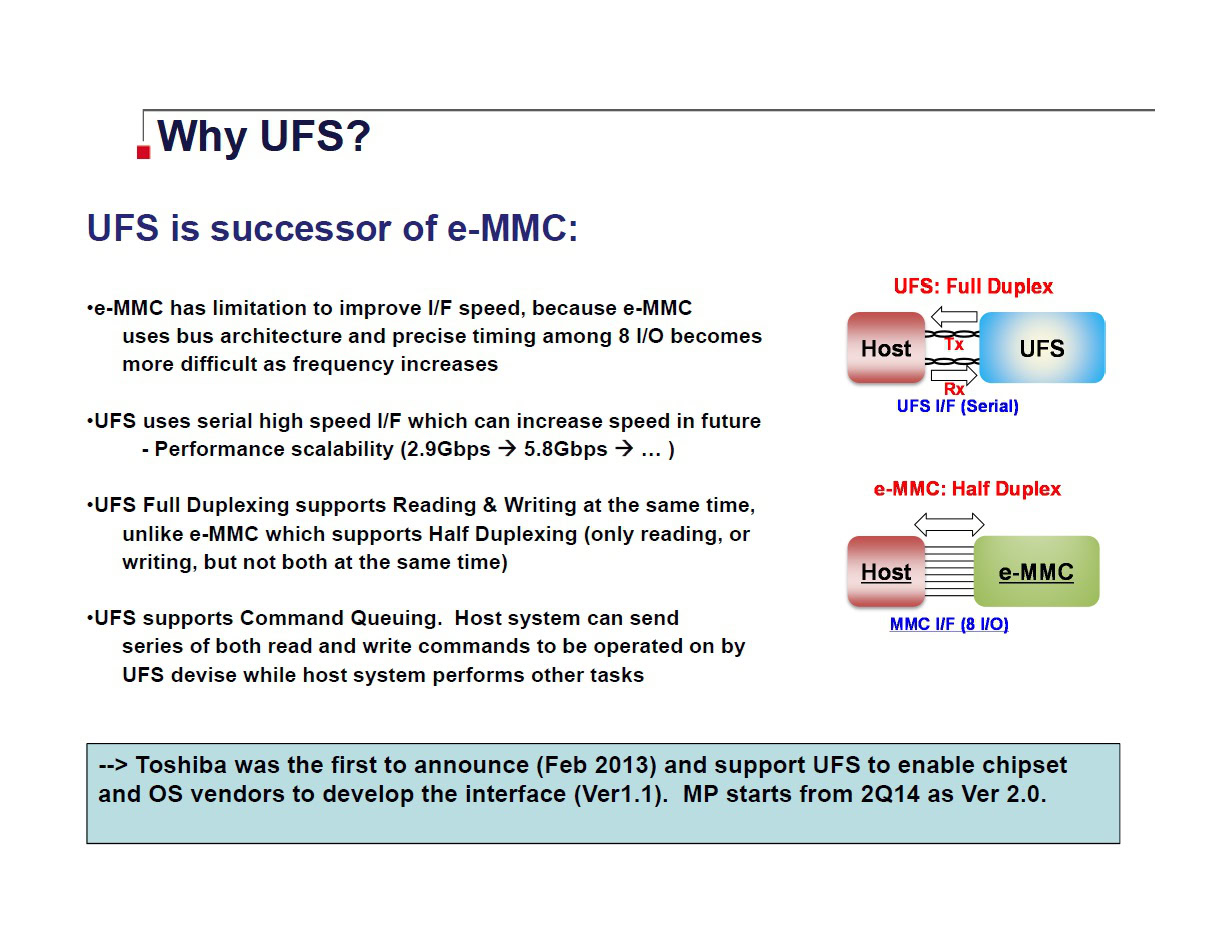Affiliate links on Android Authority may earn us a commission. Learn more.
What is UFS storage and why it matters

Following on from its recent eMMC 5.1 and ePOP mobile memory chip announcements, earlier Samsung announced that it is to begin mass production of in-house memory packages based on the Universal Flash Storage (UFS) 2.0 standard. This technology could soon become the default memory technology in high-end mobile products.
UFS is pegged as a successor to the current eMMC standard for embedded NAND flash memory, and aims to offer some of the benefits of faster SSD memory in a lower-energy chip. The package contains the NAND flash memory and controller, designed for small, mobile products. According to Samsung, UFS offers high performance benefits of the SATA interface used in PCs and the flash-optimized low power consumption of eMMC.

In terms of speed, UFS 2.0 comes in two types – HS-G2 allows for a bandwidth of 5.8Gbps, while HS-G3 has a peak bandwidth of up to 11.6Gbp/s.
Samsung’s UFS solution claims to achieve 19,000 Input/output operations per second for reads, almost double the 11,000 IOPS offered by eMMC 5.1. Samsung also claims that bandwidth can scale to 1200MB/s, three times as fast as eMMC 5.1, and that latency can fall to 50us, although we will have to wait and see if these claims make their way into products. Furthermore, UFS’s serial interface and Full-Duplex data transfer can offer two to four times the peak bandwidth of eMMC’s parallel 8-bit interface. Different manufacturer implementations of UFS will produce slightly different speed results.

Essentially, UFS will make any task requiring memory access that little bit faster. Memory bandwidth is very important for recording high-resolution video content and other memory intensive reading or writing tasks, which are becoming increasingly common operations in mobile devices. Downloading data through a fast WiFi or USB connection and installing apps can also be bottlenecked by slow memory, but UFS’s scalable 6GBps bandwidth should overcome this issue.
Samsung claims that data transfer times between PC and mobile can be reduced by 50 percent compared with eMMC, and UFS can provide about a 60 percent reduction in latency compared to eMMC, if app swapping is supported by the host. With networking speeds constantly increasing, UFS is a more futureproof solution for mobile products.

Samsung also boasts a 50 percent reduction in energy consumption, meaning that devices should be able to run for longer, especially when playing back from large files, such as video. This could be particularly beneficial in devices with higher resolution displays which can make use of high-end content.
Samsung aims to provide the new memory type in 32GB, 64GB and 128GB capacities, another sure sign that this technology is destined for the premium tier of mobile products in the near future. Toshiba and Qualcomm are also known to be working on UFS memory technologies, suggesting that the standard will eventually be integrated into a wider range of mobile SoCs.
Given the timing of the announcement and the fact that the Galaxy S6 is rumored to come in 32GB, 64GB, an 128GB versions, there’s a solid chance the new flagship will feature this USF memory module. That should help with performance and battery consumption, though other factors weigh in the balance as well.